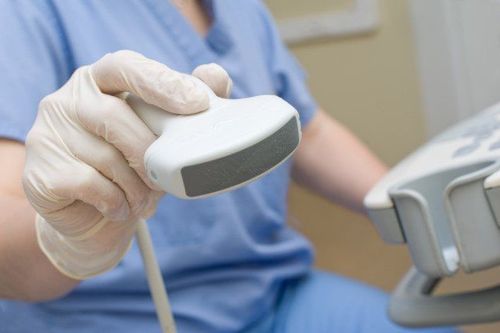This is an automatically translated article.
Natensil belongs to the group of cardiovascular drugs, has the function of preventing high blood pressure thanks to the active ingredient Enalapril maleate. Natensil is a medicine to be taken by prescription and under the supervision of a doctor. The following article will provide information about Natensil, its dosage and how to use it.
1. What is Natensil?
Natensil is classified as a cardiovascular drug, effective in the treatment of primary hypertension. The drug is prepared in the form of tablets with the active ingredient Enalapril Maleat with a strength of 5mg.2. Uses of the drug Natensil
Natensil is effective in the treatment of primary hypertension in patients with kidney disease, diabetes, and essential hypertension. The main active ingredient is Enalapril maleate, which is known to be an angiotensin-converting enzyme inhibitor for high blood pressure. Enalapril maleate in the drug has the effect of reducing peripheral arterial resistance in cases of essential hypertension.
In heart failure, Natensil reduces pre and afterload, increases cardiac output and does not affect the user's heart rate.
Natensil is made in the form of softgels and is assessed to have good absorption from the gastrointestinal tract and is not affected by food. Following oral administration of Natensil, the active substance Enalapril is hydrolyzed to the active metabolite Enalaprilate in the liver.
A single dose of Natensil has been shown to be effective enough in some cases for as little as 1 day.
After taking Natensil 4 hours, the drug concentration in the blood plasma will reach the maximum threshold. The half-life of Natensil is 11 hours, the major route of elimination is by the kidneys. A significant advantage of Natensil is that when the drug is stopped, the patient does not experience a sudden increase in blood pressure.
3. Indications to use Natensil
Natensil is indicated for the treatment of essential hypertension in the following cases
Mild to severe degrees of idiopathic hypertension Patients with hypertension due to kidney disease Patients with hypertension with diabetes In Heart failure levels: Natensil has the effect of slowing down the progression of heart failure, significantly reducing the frequency of myocardial infarction, helping to improve survival Prevention of congestive heart failure Prevention of ventricular dilatation in patients after myocardial infarction
4. Contraindications to the use of Natensil
Do not use Natensil in patients with aortic stenosis and renal artery stenosis
Patients with a history of hypersensitivity to Enalapril
5. Dosage & how to take Natensil
Natensil is taken orally, the patient takes it with a full glass of water. The drug can be taken before or after meals.
Dosage of Natensil with patients with primary hypertension
Start with a dose of 5mg, consider increasing the dose according to the degree of hypertension in the patient, the maintenance dose will be determined after 2-4 weeks of treatment. Daily dose from a minimum of 10 mg to a maximum of 40 mg, may be given as a single dose or in two divided doses In patients with primary hypertension, it is recommended to start with a low dose of Natensil to avoid sudden hypotension. suddenly. Dosage of Natensil in patients with renal impairment
Patients with creatinine clearance 30-80ml/min: 5-10mg/day Patients with creatinine clearance 10-30ml/min: 2.5-5mg/day Natensil dose in patients with heart failure
In patients with heart failure, Natensil is often combined with Digitalis and a controlled diuretic (reduce the diuretic dose and give it a long time before Natensil). The starting dose is 2.5mg, can be gradually increased to the therapeutic dose under the direction of the doctor.
6. Natensil side effects
Natensil drug includes many side effects, specifically recorded in the following organ systems
Lymphatic and hematopoietic systems: Anemia, neutropenia, thrombocytopenia, autoimmune diseases Nutritional system and Metabolism: Reduced blood glucose Nervous system: Natensil may cause headache, confusion, drowsiness, insomnia, nightmares, sleep disturbances Blurred vision, blurred vision Cardiovascular system: Myocardial infarction, Cardiac arrhythmia, cerebrovascular accident, Raynaud's phenomenon, palpitations. Respiratory system: Cough, sore throat, runny nose, hoarseness, pulmonary infiltrates, allergic alveolitis, eosinophilic pneumonia Digestive system: Diarrhea, abdominal pain, constipation, loss of appetite, glottis , dry mouth Hepatitis, liver failure leading to jaundice Skin: Itchy rash, urticaria, erythema multiforme, Stevens Johnson syndrome, exfoliative eczema, epidermolysis, eosinophilia, proteinuria. Genitourinary system: gynecomastia in men, inability to have sex. Body as a whole: asthenia, cramps, tinnitus. In patients taking Natensil, laboratory abnormalities such as: hyperkalemia, increased plasma creatinine, increased urea, increased blood sodium, elevated liver enzymes and increased plasma bilirubin are also common.
7. Notes when using Natensil
Patients with high blood pressure are volume-depleted if taking Natensil easily leads to hypotension. Use Natensil with caution in patients with left ventricular shunting. In patients with renal impairment, the starting dose should be correct for creatinine clearance. In patients on high-velocity membrane dialysis and treated with ACE inhibitors, anaphylaxis may occur if Natensil is used. Do not take Natensil in combination with lithium. Do not use Natensil during pregnancy or lactation. The drug has side effects on the nervous system, so it should not be used in people driving and operating machines. If used with extreme caution and long-term monitoring. Natensil is a drug used to treat high blood pressure in many medical conditions. Natensil is a prescription drug, use Natensil as prescribed by your doctor to achieve the best treatment effect and avoid the side effects of the drug.













